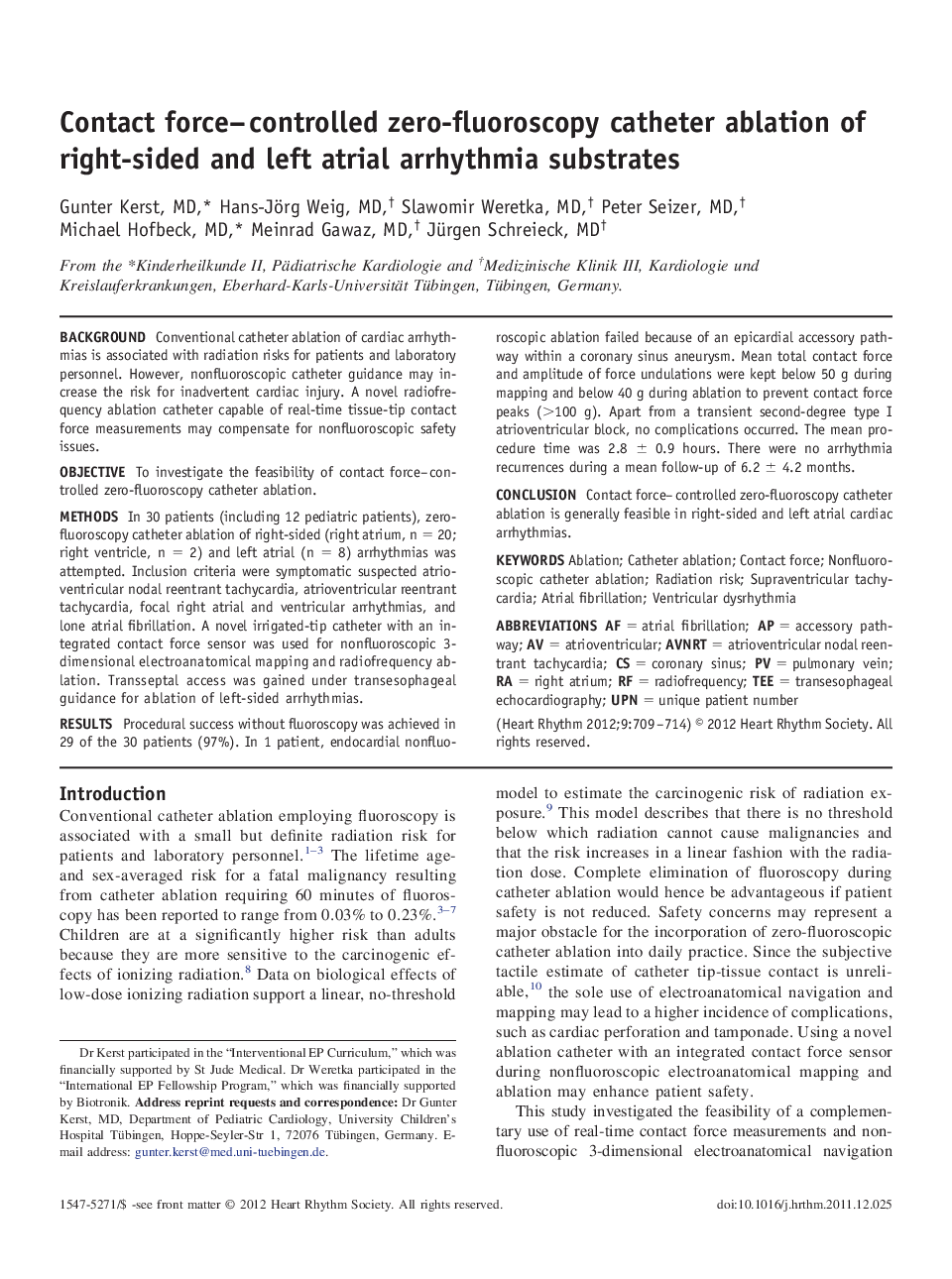| کد مقاله | کد نشریه | سال انتشار | مقاله انگلیسی | نسخه تمام متن |
|---|---|---|---|---|
| 2922442 | 1175846 | 2012 | 6 صفحه PDF | دانلود رایگان |

BackgroundConventional catheter ablation of cardiac arrhythmias is associated with radiation risks for patients and laboratory personnel. However, nonfluoroscopic catheter guidance may increase the risk for inadvertent cardiac injury. A novel radiofrequency ablation catheter capable of real-time tissue-tip contact force measurements may compensate for nonfluoroscopic safety issues.ObjectiveTo investigate the feasibility of contact force–controlled zero-fluoroscopy catheter ablation.MethodsIn 30 patients (including 12 pediatric patients), zero-fluoroscopy catheter ablation of right-sided (right atrium, n = 20; right ventricle, n = 2) and left atrial (n = 8) arrhythmias was attempted. Inclusion criteria were symptomatic suspected atrioventricular nodal reentrant tachycardia, atrioventricular reentrant tachycardia, focal right atrial and ventricular arrhythmias, and lone atrial fibrillation. A novel irrigated-tip catheter with an integrated contact force sensor was used for nonfluoroscopic 3-dimensional electroanatomical mapping and radiofrequency ablation. Transseptal access was gained under transesophageal guidance for ablation of left-sided arrhythmias.ResultsProcedural success without fluoroscopy was achieved in 29 of the 30 patients (97%). In 1 patient, endocardial nonfluoroscopic ablation failed because of an epicardial accessory pathway within a coronary sinus aneurysm. Mean total contact force and amplitude of force undulations were kept below 50 g during mapping and below 40 g during ablation to prevent contact force peaks (>100 g). Apart from a transient second-degree type I atrioventricular block, no complications occurred. The mean procedure time was 2.8 ± 0.9 hours. There were no arrhythmia recurrences during a mean follow-up of 6.2 ± 4.2 months.ConclusionContact force–controlled zero-fluoroscopy catheter ablation is generally feasible in right-sided and left atrial cardiac arrhythmias.
Journal: Heart Rhythm - Volume 9, Issue 5, May 2012, Pages 709–714